Features of wall insulation with penoplex
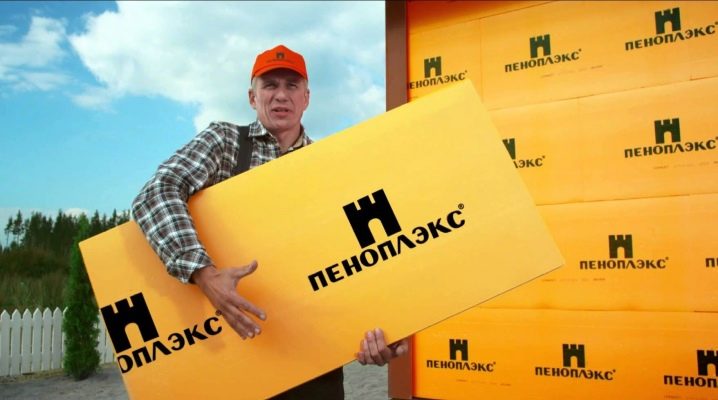
A private house will be more cozy and comfortable for living if it is properly insulated. Fortunately, there are many different materials for this in our time. A suitable insulation can be selected for any needs and for any wallet. Today we will talk about one of the most popular thermal insulation coatings - penoplex.
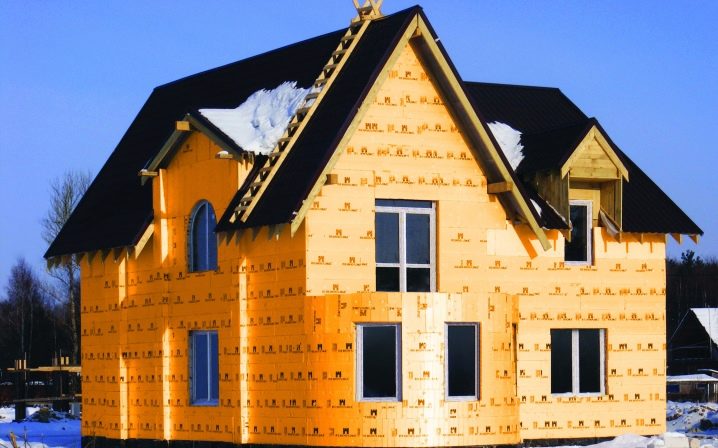
Coating properties
Products with a wide variety of performance characteristics can be found on the insulation market today. Without these components, it is impossible to imagine a modern private building. In such homes, you simply cannot do without reliable insulation, especially in the cold season.
Modern thermal insulation materials are also good in that they can be used to save on heating systems. Moreover, in a well-insulated house it will be possible to do without buying additional heaters, which often “eat up” a lot of electricity. Moreover, in a well-insulated house, it will be possible to do without buying additional heaters, which often “eat up” a lot of electricity.

Penoplex is one of the most popular thermal insulation materials today. It is expanded polystyrene, which is extruded during its production. In addition, this high-tech material is manufactured exclusively using a special technology.
This insulation is based on polystyrene. This material undergoes heat treatment, after which it becomes much tougher and stronger. At the same time, penoplex acquires increased thermal insulation properties, which allow the use of such a coating for insulating residential buildings.
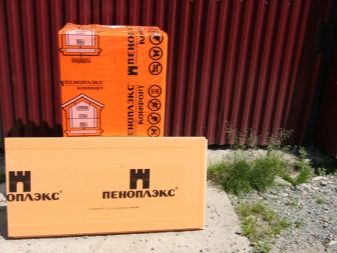

The main feature of penoplex is that it has a minimal degree of water absorption. Thanks to this distinctive feature, this material can be safely used even in environments with high humidity levels.
Penoplex has a smooth surface, which affects its adhesion to other materials. When installing this insulation, it is recommended to use the most reliable and effective adhesive mixtures, otherwise the insulation will not hold very tightly on the wall bases.
In addition, it is strongly discouraged to apply to the "wet" finishing of the house if it is insulated with foam. This will deteriorate its adhesion even more. This feature should be taken into account when installing the facade insulation.
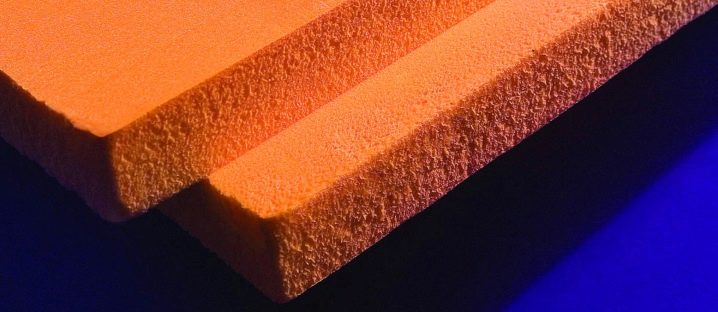
Many homeowners are wondering if cheaper and more affordable styrofoam can be used instead of foam. Experts still recommend turning to the extradited polystyrene foam, since it has a more reliable and dense structure. In addition, it is vapor permeable and has low thermal conductivity. Cheap polystyrene, on the other hand, cannot boast of sufficient strength: it easily degrades over time, and the thermal qualities of this material are inferior to penoplex.
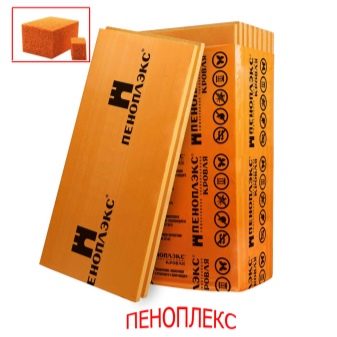
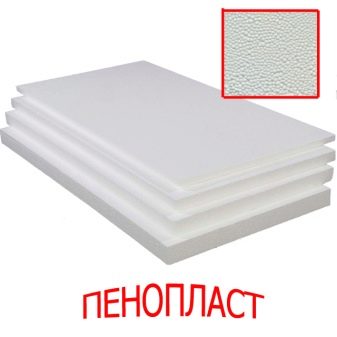
When self-laying penoplex in a private house or apartment, it is very important to choose the correct installation technology. Craftsmen who have very little experience in such work often install this thermal insulation material in the same way as simple polystyrene foam.When working with an extruded coating, there are many important nuances to consider, which we will look at below.
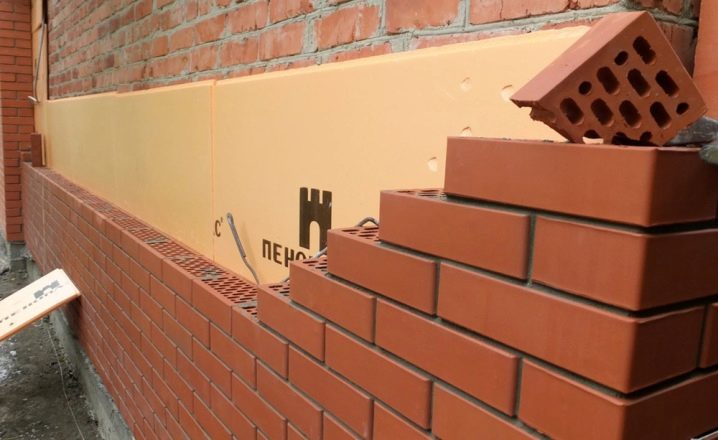
It is also worth considering that this thermal insulation material can be applied to a wide variety of substrates. It can be wooden, brick, and concrete structures, and walls made of aerated concrete or foam blocks. Thanks to this feature, we can confidently say about the versatility of penoplex.
Wall insulation with extruded polystyrene foam can be done by hand. So that the result does not disappoint you, and the insulation lasts as long as possible, you should follow the simple step-by-step instructions.
If you are afraid to take on such work, then it is better to hire a professional master. So you protect yourself from damage to materials.
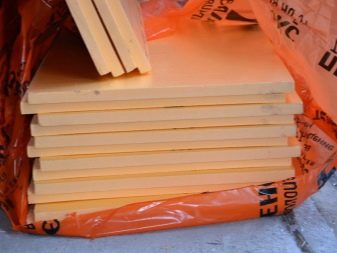
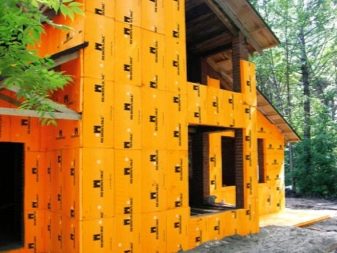
Pros and cons of the material
Currently, many homeowners choose exactly penoplex for insulating their homes. This material is very popular due to its good performance characteristics. In addition, it is quite possible to carry out the work on its installation on your own, which allows you to significantly save money, because the services of professionals today are not cheap.
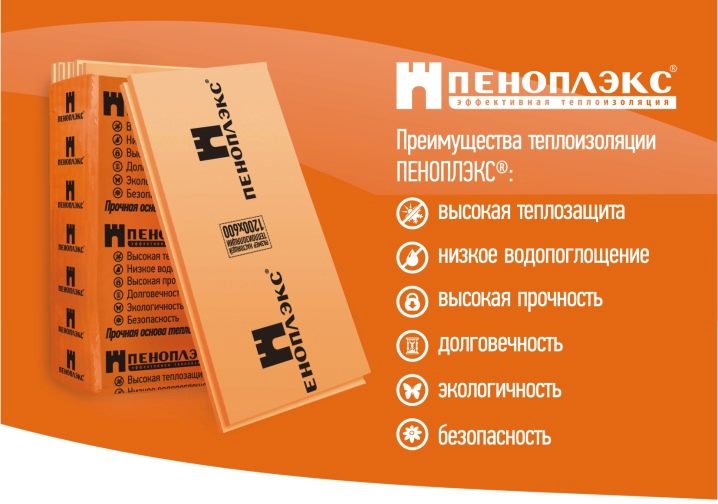
Penoplex, or extruded polystyrene foam, has many positive qualities that have made it a leading product in the insulation market. Let's get acquainted with the main list of positive qualities of this type of insulation:
- The main advantage of penoplex can be considered its increased strength. In this matter, this thermal insulation material is ahead of its competitors.
- In addition, Penoplex is characterized by almost zero moisture and moisture absorption. Due to this plus, it is absolutely not necessary to supplement such a material with a vapor barrier membrane after installation.
- This thermal insulation product can be in contact with any other materials without any problems. In this case, no chemical reactions occur. The only exception is contact with solvents or acetone.
- As mentioned above, penoplex is installed on walls (and other surfaces) quite simply and quickly. To do this, you do not need to have a special education - you just need to adhere to the step-by-step instructions.
- Penoplex belongs to the products of the middle price category.
- This popular material effectively traps heat in the home. Thanks to this quality, a comfortable microclimate is maintained in the home.
Currently, several varieties of penoplex are sold in stores. This suggests that you can choose the best option for any conditions.
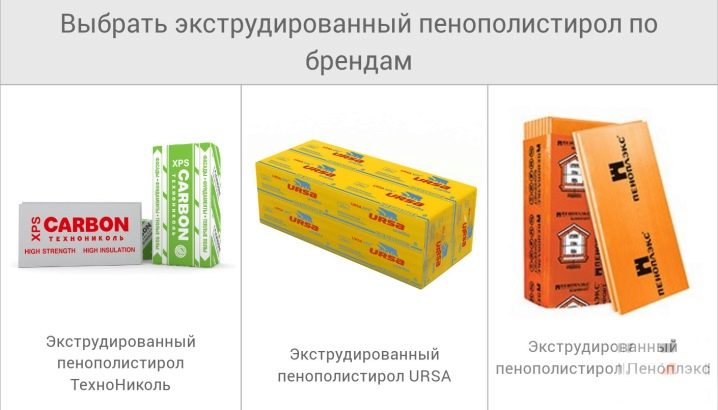
In addition, a number of positive properties stand out;
- Penoplex is considered an environmentally friendly and safe material: it does not emit hazardous substances that can harm the health of households. Unfortunately, today not every material can boast of such dignity.
- Extruded polystyrene foam is a vapor-permeable material. A dwelling with such insulation will remain "breathing", so fungus or mold will not appear on the ceilings, which can be very difficult to get rid of.
- Such insulation is lightweight, so installation work cannot be called energy-intensive. In addition, the transportation of the foam is not expensive.
- High-quality foam is a durable material: it will not require replacement or repair in the coming decades.
- Penoplex is distinguished by its anti-corrosion composition, so it can be safely laid on bases consisting of a variety of materials.
- Such insulating material does not cause allergic reactions, even if the temperature is high in the room.
- Penoplex does not rot or deform over time.
- This insulation can be used both during the construction of a new home and during the restoration of an old one.
- Due to its excellent strength characteristics, extruded polystyrene foam can withstand heavy loads without problems.It is difficult to damage it during operation.


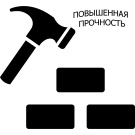

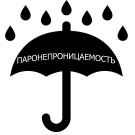

It is possible to insulate houses with penoplex both inside and outside the living space.
As you can see, penoplex has a lot of advantages. That is why this material collects positive reviews on the Internet. Consumers love that this insulation is easy to install and has excellent technical characteristics. However, penoplex also has its drawbacks, which you definitely need to know about if you decide to insulate the walls with this popular material.
- When buying this heat-insulating material, be sure to consider that it is flammable and flammable.
- Extruded polystyrene foam does not tolerate interaction with solvents: under their influence, this insulation can undergo deformation and even collapse.
- It is worth considering that in some situations, low vapor permeability is more a disadvantage than an advantage of foam. For example, if you install this material in the wrong way or place it in unfavorable conditions, then condensation from the outside can accumulate in it. In such environments, insulation can become a favorable environment for the formation of mold or mildew. In order not to face such defects, you will have to provide the living space with the highest quality ventilation, otherwise air exchange will be disrupted.
- Penoplex does not have good adhesion characteristics, as it has a perfectly flat and smooth surface. For this reason, the installation of such insulation often causes many difficulties and takes a lot of time.

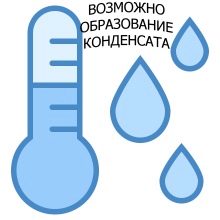
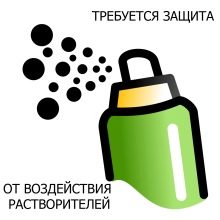
- Experts recommend protecting the penoplex from direct sunlight: when in contact with them, this insulation can deform (the top layer of the material usually suffers most of all).
- Many consumers refuse to buy penoplex because of its susceptibility to combustion, so modern manufacturers have found a way out: they began to supplement this material with special substances (antiprenes) during the manufacturing process. Thanks to these components, the insulation becomes self-extinguishing, but when burning, it can begin to emit thick black clouds of smoke and toxic substances.
Penoplex has much fewer minuses than pluses, but the choice remains only with the buyers. It should only be borne in mind that many of the problems associated with this insulation can be avoided if it is installed correctly.
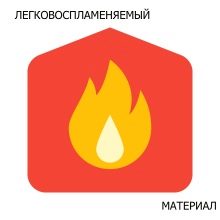
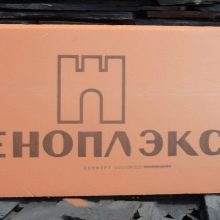

Preparatory work
Before laying the foam, it is necessary to correctly prepare the base. This stage of work cannot be neglected, otherwise the insulation will poorly adhere to the walls. Let's take a closer look at how to properly prepare the floors for the installation of this thermal insulation coating.
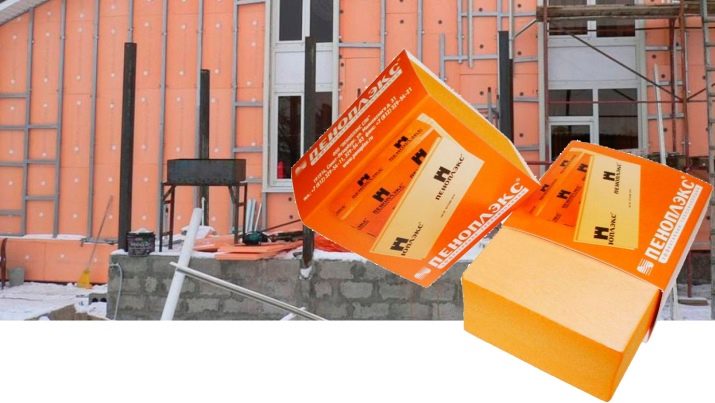
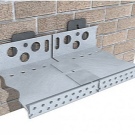
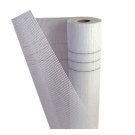
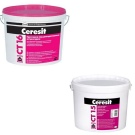
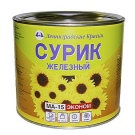
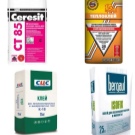
To begin with, you need to stock up on all the necessary tools and devices, before proceeding directly to the preparation and installation of the foam on the "wet" facade. To carry out all work, you will need the following items and materials:
- high-quality adhesive mixture;
- special adhesive primer;
- corners;
- deep penetration primer mixture;
- reinforced mesh (it is advisable to stock up on a fiberglass product);
- dye;
- plaster.
If you plan to install the penoplex on a hinged base, then you will need the following tools and materials:
- wooden slats (metal profiles are possible);
- brackets;
- vapor barrier film;
- glue foam;
- antifungal impregnation specially designed for wood processing;
- decorative finishing material (it can be lining, vinyl siding, block house and other coatings).
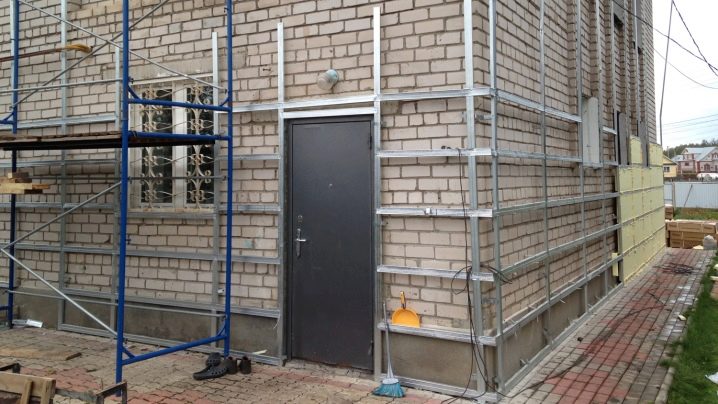
If you have stocked up with all the necessary materials and tools, then you can proceed directly to laying the insulation on the walls. To begin with, let's take a look at how this work is carried out with a wet facade.
- Remove from the walls all extraneous parts and elements that may interfere with further cladding and decoration.
- Now you need to form the most reliable and strong base for insulation. For example, if you suddenly notice that there are pieces of plaster mixture falling off on the walls, then they must be removed.
- Then you should walk along the facade with a damp cloth. It is permissible to use a vacuum cleaner that will help remove excess dust from the floors.
- Further, the bases must be thoroughly primed with a special facade soil of deep penetration. It is convenient to carry out this work with a roller or brush. Apply primer in a thin layer while preparing. After the first layer is dry, proceed to applying the second.
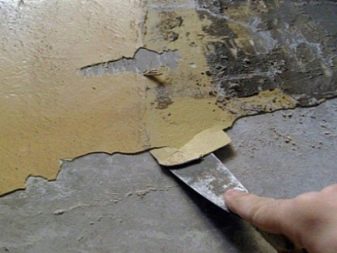
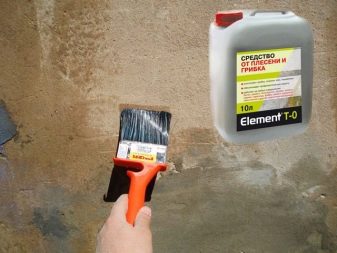
When decorating a hinged facade, preparation for laying insulation is as follows:
- remove all dirt and dust from the bases;
- treat walls with special impregnation;
- insulate the gaps between the joints by filling them with suitable heat-insulating materials.
After completing these actions, you can design the frame and proceed with the insulation of the walls.

Penoplex can sheathe not only the facade foundations, but also the inside of the dwelling. To do this, you will need the following materials:
- high-quality penoplex (it is advisable to buy material with improved characteristics);
- glue;
- primer;
- plaster.
In this case, it is also necessary to prepare the walls for laying insulation. To do this, you need to perform the following actions:
- remove any old finish from the floors, be it wallpaper or paintwork;
- follow the evenness of the walls: they should be smooth, without drops and potholes (if any, they should be removed with the help of plaster and soil);
- if there are protruding parts on the floors, then they need to be thoroughly cleaned;
- after that, it is recommended to prime the walls twice so that the penoplex adheres to them better. After completing all the above steps, you can glue the insulation.
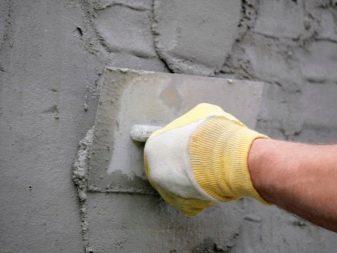
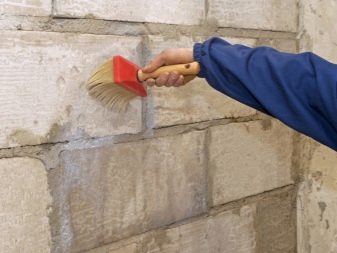
Outdoor mounting technology
It is quite possible to insulate the facade of the house with your own hands. The main condition is to comply with the foam styling technology. To begin with, we will consider how to carry out sheathing of a "wet" facade with penoplex.
- First, it is necessary to install a finished profile along the perimeter of the facade (at the bottom). Thanks to this detail, it will be more convenient for you to align the bottom row of insulation.
- It is recommended to install the profile using dowel nails. In this case, it is very important to correctly position the guide, therefore, it is recommended to use the building level during all work.
- Next, the glue foam must be applied to the insulation around the perimeter and at the central point. It is advisable to leave a few strips of adhesive in the center.
- After that, you should attach the penoplex to the wall. It is worth starting such work starting from the corner. Insert the board into the guide profile, and then press it against the wall. Be sure to check the position of the foam with a level.
By the same principle, you need to glue the entire first row. Position the canvases so that they are as close to each other as possible (no gaps or crevices).
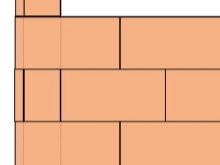
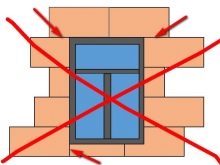
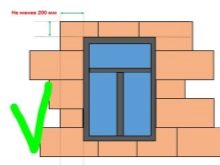
- Then you can proceed to the installation of the second row of insulation:
- It should be installed with a slight offset (like a checkerboard layout).
- When all floors are closed with insulation, you need to install the penoplex on the slopes. To do this, slabs should be cut into the desired dimensions. Next, you need to glue the window and door openings with cut materials.
- Then you need to additionally fix the penoplex on the walls. To do this, you can use special dowels, which are popularly called "fungi" or "umbrellas".
- To install the dowel, you need to drill a hole in the ceiling, breaking through the thermal insulation material. The hole must necessarily match the dowel (its diameter). As for the length, it should be slightly larger - by 5-10 mm.
- Heaters located on the slopes do not need to be additionally fastened to the dowels.This completes the process of laying the insulation on the "wet" facade.
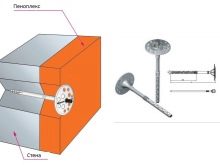
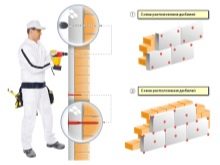
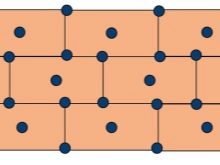
When insulating a suspended facade, you should also adhere to a certain technology.
- First of all, as in other cases, overlap should be prepared.
- It is necessary to mark the floors for the correct arrangement of the racks in the form of vertical stripes. The ideal step between these parts is 50 cm.
- On the indicated lines on the walls, you need to attach brackets with the same distance of 50 cm vertically. To fix these elements, you can use dowel nails.
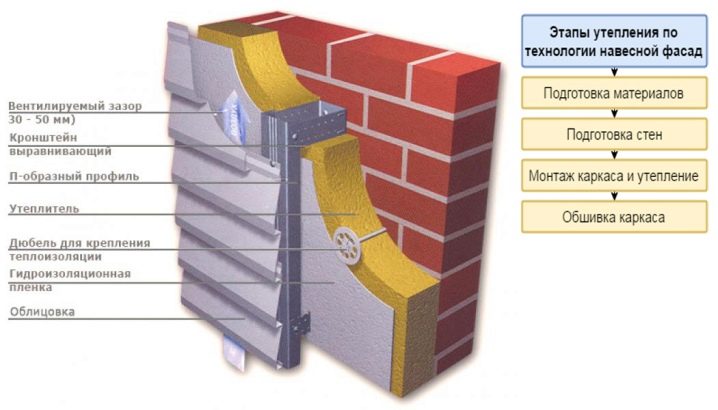
After that, you can start wall cladding with penoplex:
- It is simply strung on the brackets. With this method, it is not at all necessary to use glue. It is only important to make sure that each tile is captured by at least one dowel.
- If you are insulating a wooden house, then foaming the cracks is not necessary: these elements will provide good vapor permeability characteristics of the insulation, which are especially important for wood floors.
- If the walls in the house are made of brick or other similar material, then it is recommended to close all cracks and joints with polyurethane foam.
- It is recommended to cover the surface of the foam with a vapor barrier material if you are insulating a building made of wood. In this case, the additional film should be fixed on the dowel-umbrellas.
- Further, in the brackets, you need to fix metal racks or wooden bars.
During installation work, it is very important to ensure that all elements are fixed in a single vertical plane.
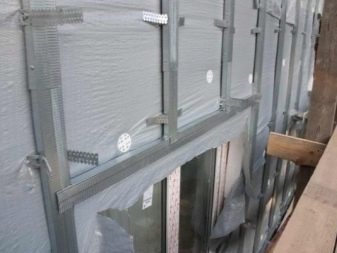
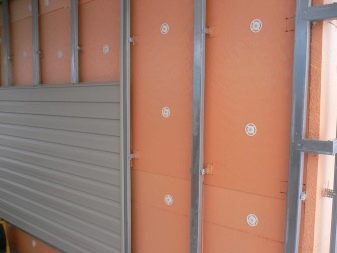
At this, the insulation of the suspended facade can be considered complete. After that, it is permissible to proceed to the installation of decorative finishing materials. For this, profile structures are most often used, on which the sheathing itself is installed, for example, lining.
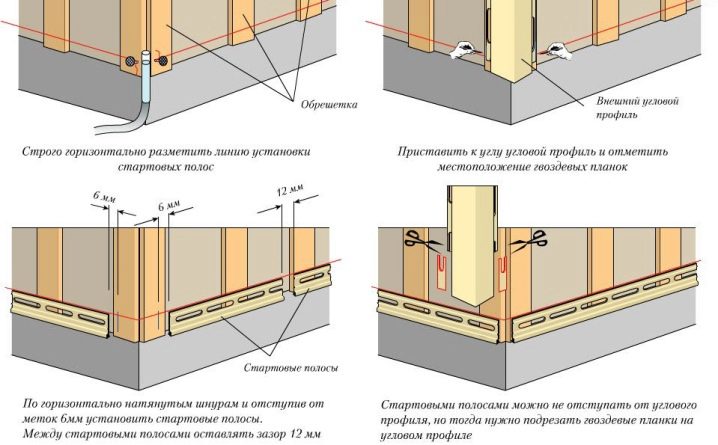
How to fix from the inside?
A little less often, the owners turn to insulation of floors with foam from the inside. In this case, you also need to rely on step-by-step instructions to avoid common mistakes.
- If you have completed all the preparatory work, you can safely proceed to sheathing the interior of your home with insulation. First you need to improve the adhesion properties of the materials. For this, it is recommended to treat the base with a high-quality special primer mixture. This process can be done sequentially in 2 passes.
- Since penoplex is a moisture-proof material, it is completely unnecessary to install a waterproofing layer, however, experts recommend that you be insured and do not neglect this component.
- Then you can proceed to the direct installation of the penoplex on the walls. Previously, conventional disc dowels were more often used for this, which are still used today. However, nowadays, special high-quality glue can be purchased instead of such fasteners. Of course, you can use both for added reliability.
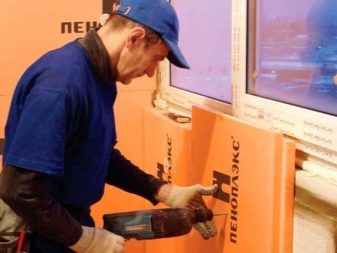
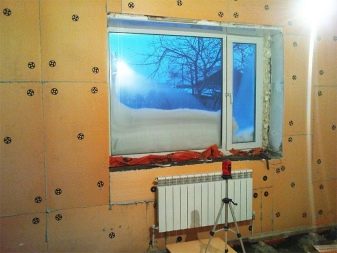
After fixing the penoplex, you can proceed to the interior decoration of the room. However, before that, it is recommended to make sure that the insulating structure is sufficiently tight, because even a very small crack or gap can cause a cold "bridge" to appear. Be sure to carefully inspect all joints and junction points of materials (in areas of window and door openings). If you find problematic elements, they need to be corrected. For this, it is permissible to use a sealant or polyurethane foam.
After that, you can install a vapor barrier material, but in the case of penoplex, this is not necessary.
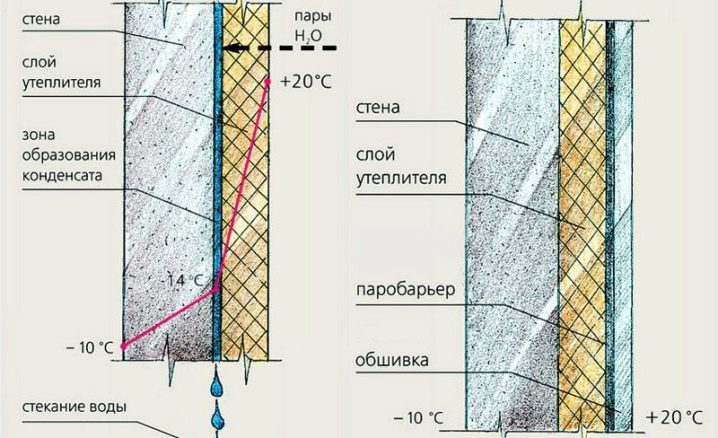
As for the decoration of insulated walls, for this they most often use a reinforcing mesh, which also needs to be leveled with an adhesive solution. After that, you can proceed to applying the decorative material.
For more information on how to insulate walls with foam from the inside, see the next video.
Helpful hints
Most homeowners look to exterior rather than interior foam insulation. This is due to the fact that in the second option, the useful area of the room is hidden.
To significantly reduce heat loss, it is recommended to lay penoplex in two layers. Then you will have a layer of optimal thickness.
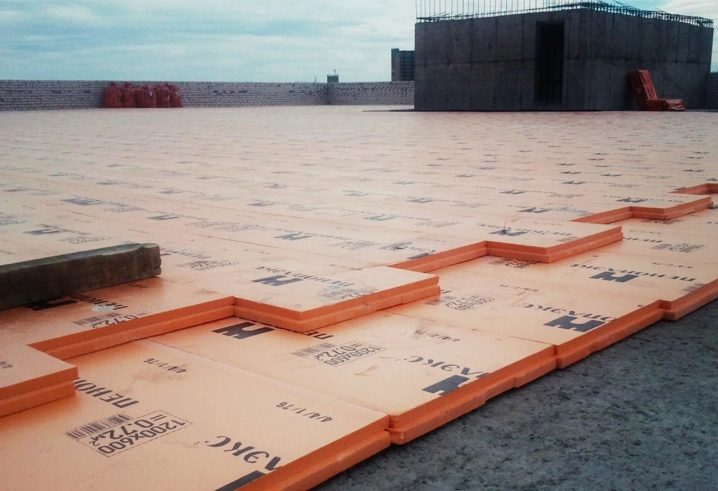
When decorating floors after insulation, they often turn to grouting. It is better to use sandpaper for this. You can proceed to this stage after the reinforcing layer has completely dried. Despite the strength of the foam, you should be careful when working with it, as this material can still be damaged or broken.

Choose high-quality and most effective glue for penoplex. For laying this insulation, a special glue-foam is ideal: it firmly and tightly attaches the material to the base and holds it reliably enough. Make sure that the thickness of the foam for wall insulation is at least 5 cm. Provide the insulation with a reliable and tight attachment to the base. Use both nails and glue.
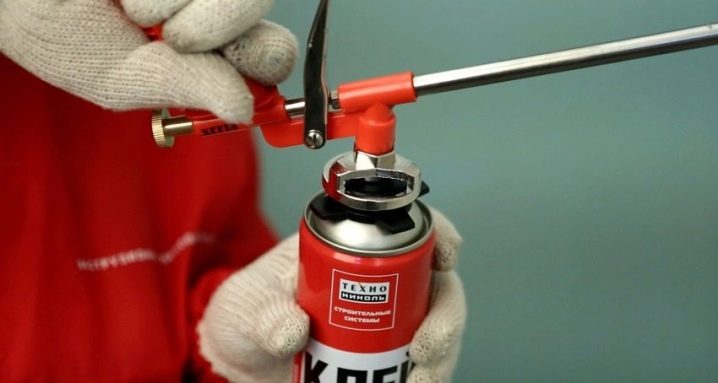
The priming layer must be applied to the floors in an even and not very thick layer. When it is completely dry, be sure to repeat the operation.
During the installation of insulation, one cannot do without a profile, especially when it comes to installing a frame structure. It is advisable to purchase a bubble or laser instrument, which are both easier and more convenient to use.
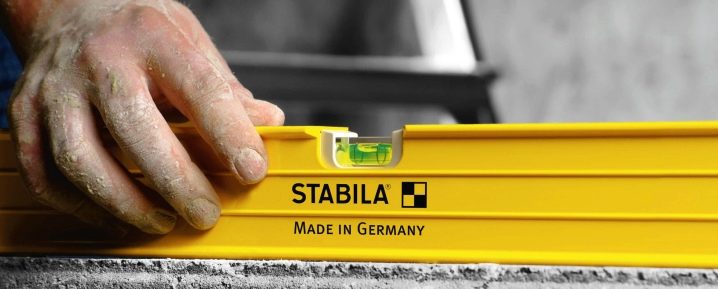
To make the external insulation of the house more effective and complete, it is recommended to insulate the foundation in advance (along with it, you can insulate the basement). In this case, all work is done quite simply: first you need to dig out the foundation base, clean it of any dirt, and then glue the sheets of foam. After this, the base can be buried.
When installing penoplex on the facade of a building, make sure that the canvases overlap each other by about 10 cm. Thus, you can avoid the formation of cracks.
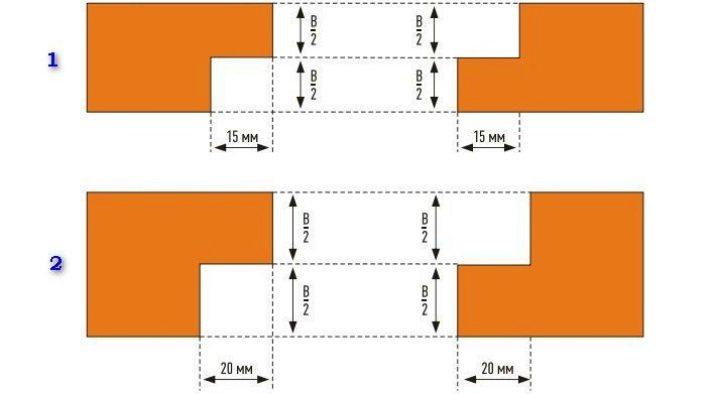
Extruded polystyrene foam is a strong and durable material, however, it does not tolerate contact with the following substances:
- gasoline, diesel fuel, kerosene;
- acetone and other ketone solvents;
- formalin and formaldehyde;
- benzene, xylene, toluene;
- various complex esters;
- complex polyesters;
- coal tar;
- oil paints.
It is most convenient to apply adhesive to materials with a notched trowel. In this case, it is advisable to make the adhesive layer no more than 10 mm.
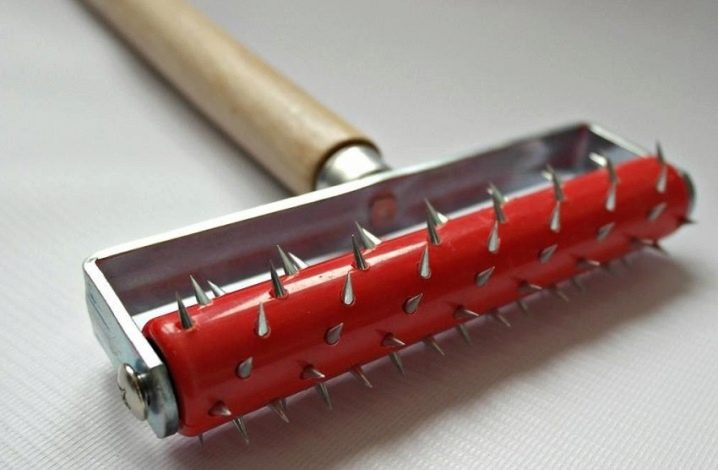
Facade foam, glued to the floors, needs to be bandaged with vertical seams. This technology is very similar to laying bricks.
If you are going to plaster a wall insulated with foam, then you should first apply a base composition with a reinforcing mesh. The density of the latter should be at least 145 g / m2. Make sure that the size of the overlap is about 10 cm. Next, you need to put a leveling plaster layer (its thickness should be at least 5 mm). Only then should the heat-insulating material be covered with a decorative finish.
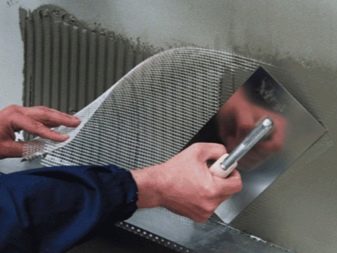
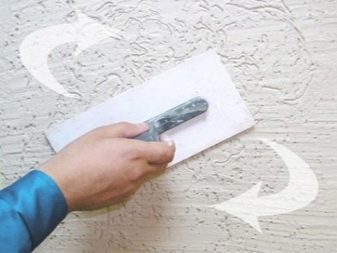
If you are sheathing the house with penoplex in 2 layers, then first glue the starting layer, and on top of it put the next layer with a slight offset. Before that, it is worth treating the plates with a roller.
Before installing the insulation, remove old coatings only if they have noticeable damage or crumbling areas. If the previous finish does not have any defects and complaints, then the penoplex can be put on it.
When laying the foam, it must be borne in mind that when applying it using the "wet" technology, you will have to repair the cladding quite often due to its weak durability and strength. That is why, during such work, it is necessary to install the insulation as tightly as possible to the surface.

Penoplex can be installed on a variety of bases. It can be safely used for a private / country house or city apartment. In addition, you can easily put this insulation not only on the walls, but also on the roof / ceiling ceilings.
Experts advise not to rush to insulate the house until it shrinks completely. Otherwise, the layer of plaster will be covered with cracks and may begin to crumble. To carry out thermal insulation work, it is necessary to select exclusively high-quality materials and tools.
Do not look for too cheap penoplex, as its quality can disappoint you over time. In addition, this product belongs to the middle price category and is inexpensive.
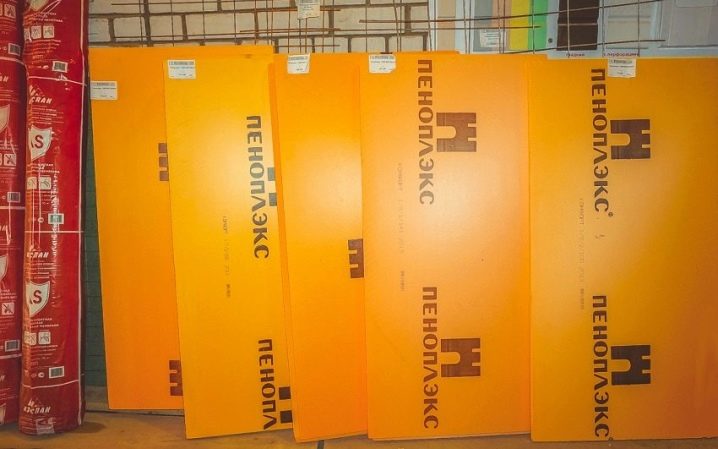
It is permissible to level the bases for laying the foam with plasterboard. However, the presence of this material will hide additional space in the room. Owners of city apartments with uneven ceilings often turn to such solutions.
If you decide to put penoplex on a foam concrete wall, then installing a vapor barrier material will come in handy. These components are not needed only if we are talking about bases, the structure of which is not porous.
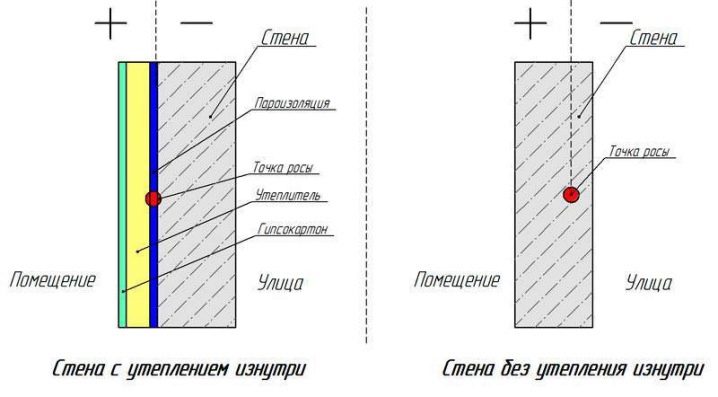













Is it possible to insulate the floor with penoplex, or is it suitable only for walls?
It is possible and necessary.
The comment was sent successfully.